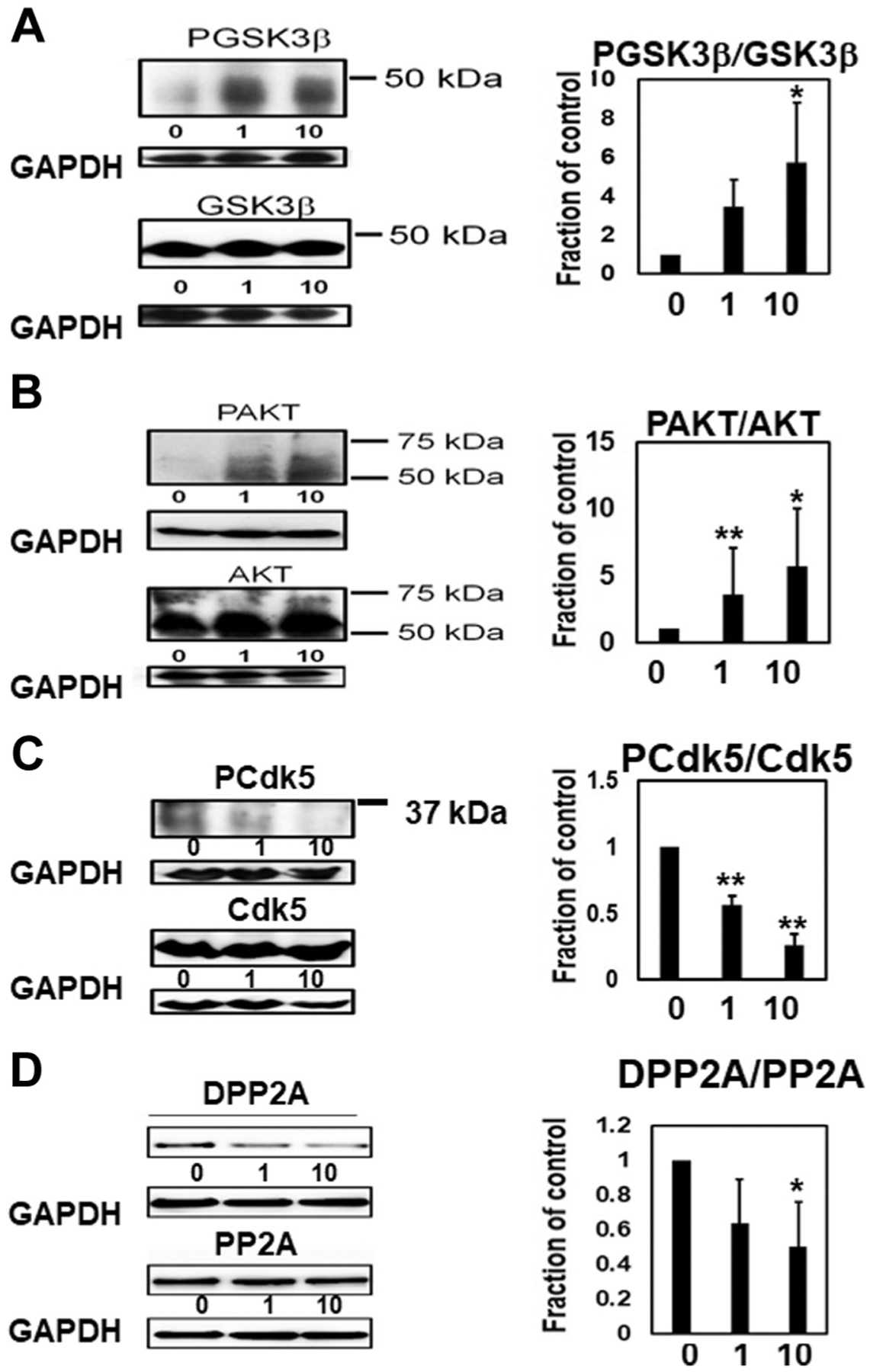Fig. 4.

Tau kinase inactivation by the ROCK inhibitor (H1152). GSK3β was inactivated by the ROCK inhibitor. 0: 0 μM ROCK inhibitor, 1: 1 μM ROCK inhibitor, 10: 10 μM ROCK inhibitor. N = 4, *p < 0.05, Bar: ± SD (A). Akt activation was also observed with the ROCK inhibitor treatment. 0: 0 μM ROCK inhibitor, 1: 1 μM ROCK inhibitor, 10: 10 μM ROCK inhibitor. N = 4, **p < 0.01, *<0.05, Bar: ± SD (B). Cdk5, another tau kinase, was inactivated by ROCK inhibitor treatment. N = 3, **p < 0.01, Bar: ± SD (C). Inactivated PP2A (DPP2A) was decreased, whereas total PP2A was unchanged by ROCK inhibitor treatment. N = 3, *p < 0.05, Bar ± SD (D). Data from GSK3β/GSK3β, PCDK5/CDK5, and DPP2A/PP2A followed a normal distribution and were analyzed with one-way ANOVA followed by Bonferroni post hoc test, whereas the Kruskal-Wallis test followed by Dunn’s post hoc test was used for PAKT/AKT because the data deviated from a normal distribution. Abbreviations: Cdk5, cyclin-dependent kinase 5; DPP2A, demethylated PP2A; GSK3β, glycogen synthase kinase 3β; pCdk5, phosho-Cdk5; PP2A, protein phosphatase 2A; ROCK, Rho-associated coiled-coil protein kinase.
